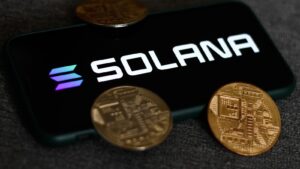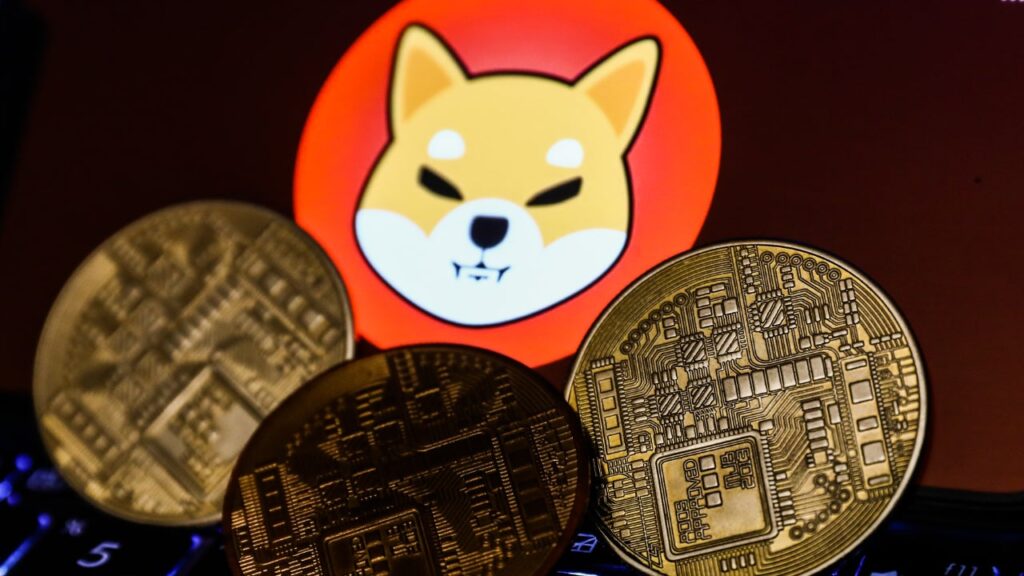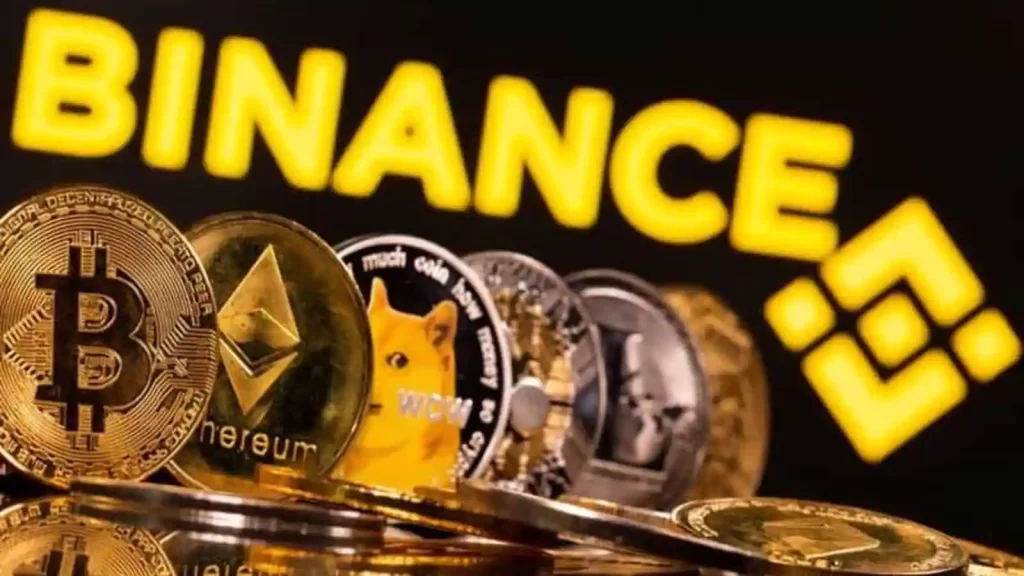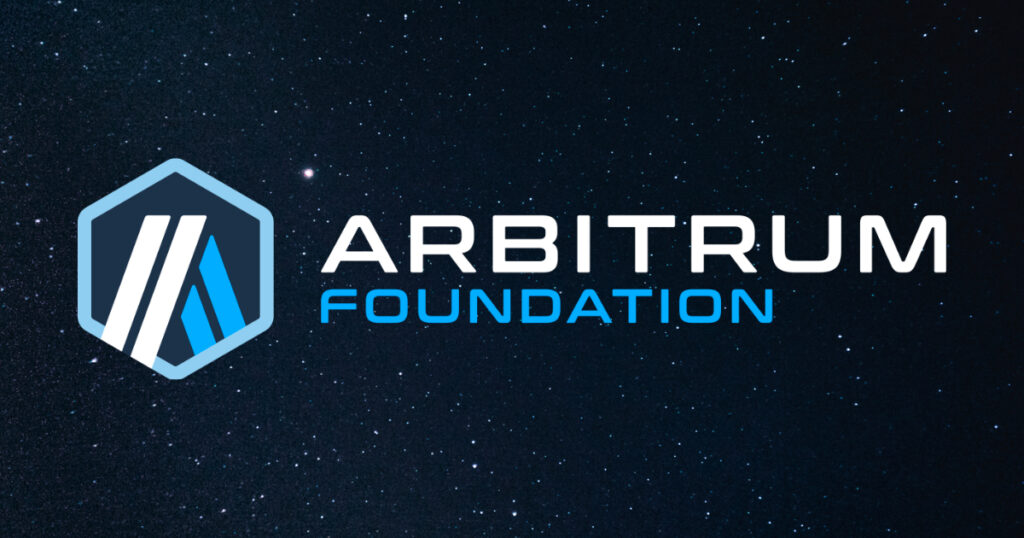Institutional investment in Bitcoin mining by large public companies has notably impacted the landscape for individual and small-scale miners, with significant consequences for the network’s dynamics, according to a Bitfinex report on the cryptocurrency mining ecosystem ahead of the Bitcoin halving.
The study reveals a shift from the decentralized vision of Bitcoin, where individuals contributed to network security, to a scenario dominated by corporate entities.
These entities prioritize shareholder returns, operating on a much larger scale with different priorities than smaller miners.
The report emphasizes their focus on profitability and managing investor expectations, often sidelining the community’s more altruistic values such as network security, egalitarian access, and censorship resistance.
The entry of Wall Street funding into Bitcoin mining has professionalized the sector, leading to increased hashing power that could theoretically enhance network security and stability.
However, concerns arise about centralization and corporate influence, which could diverge from Bitcoin’s original ethos of being open, borderless, and resistant to control by any single entity.
The Bitfinex analysis notes that the consolidation of mining operations by these large companies could potentially threaten Bitcoin’s decentralized nature, as they are able to scale operations more effectively, secure cheaper energy, and invest in the latest technologies, making it difficult for smaller miners to compete.
The infusion of institutional capital has altered the incentive structure within the network, favoring those who can operate on a large scale.
This shift raises questions about the future of Bitcoin’s decentralized ethos and whether the increased centralization could impact network security and the distribution of mining rewards.
The survival of independent and hobbyist miners now depends on their ability to innovate and collaborate.
Mining pools are suggested as a solution, allowing for the pooling of resources to stay competitive.
Moreover, the sustainability of hobby mining is contingent on the development of more efficient mining technologies and the utilization of renewable energy.
Geographical diversification of mining operations is also highlighted as vital for maintaining the network’s decentralization.
Emerging markets with renewable or untapped energy sources are seen as promising locations for new mining ventures.
The report concludes that, while the landscape is evolving, the core community values and decentralized nature of Bitcoin must be preserved to ensure the network’s integrity and resilience.
To submit a crypto press release (PR), send an email to sales@cryptointelligence.co.uk.
Coinbase, a leading cryptocurrency exchange, has announced a strategic shift in the management of its USD Coin (USDC) stablecoin accounts, signaling a significant move towards utilizing its Ethereum layer-2 blockchain, Base.
The transition, disclosed by Coinbase vice president Max Branzburg via a post on the social platform X on March 26, is designed to enhance the exchange’s capability to manage and secure customer funds with “lower fees and faster settlement times.”
This adjustment specifically affects Coinbase.com accounts, with Coinbase Wallet accounts remaining unaffected due to users’ control over their private keys.
Currently, the platform secures user tokens through multiparty computation technology.
Highlighting the company’s strict policy on asset management, Branzburg emphasized that Coinbase maintains a 1:1 holding of customer assets and refrains from lending funds without explicit authorization from the customers.
This move is not just a logistical change; it represents a step towards the realization of an on-chain financial ecosystem.
David Hoffman, a co-host of the Ethereum-centric Bankless show, noted this transition as a pivotal moment towards achieving such a future.
READ MORE: ARK Invest Sells Off $31.5 Million in Robinhood Shares Amid Crypto-Friendly Broker’s Stock Surge
Additionally, Ryan Sean Adams, another Bankless co-host, views this development as setting a standard for other cryptocurrency exchanges and banks, suggesting a future where every asset is tokenized and every bank operates on a blockchain.
Despite the optimism, some skepticism exists around the degree of decentralization of Base, with concerns raised over its current state of centralization, given Coinbase’s role as the sole sequencer.
However, Coinbase has expressed plans to gradually decentralize Base, reinforcing this intent by open-sourcing Base’s code in October for greater transparency and community involvement.
Launched on August 9, 2023, Base serves as an Ethereum scaling solution employing optimistic rollups for efficient off-chain transaction data storage.
It ranks as the fourth-largest Ethereum layer 2 by total value locked, boasting $2.63 billion, and recently achieved a record of 2 million daily transactions, indicating growing user engagement.
This strategic shift by Coinbase not only aims to enhance transaction efficiency and security but also signifies a broader move towards an on-chain financial infrastructure, setting a precedent for the industry at large.
To submit a crypto press release (PR), send an email to sales@cryptointelligence.co.uk.
The Shiba Inu cryptocurrency experienced a 7% increase in its value over the last 24 hours, with its price reaching $0.00002995 at 03:51 a.m. EST, based on a trading volume that saw a 42% rise to $2.2 billion.
This surge comes as SHIB successfully breached the $0.00003 price mark, boasting a 211% rise within just 30 days, hinting at a potential rebound to its annual peak of $0.00004563, recorded on March 5.
March was a significant month for Shiba Inu, marked by considerable gains and a stark increase to a resistance level at $0.00004568.
However, facing resistance led to a correction, mirroring a broader market downtrend.
Despite this, SHIB supporters have rallied from lower support levels, notably around $0.000020, propelling the cryptocurrency above a declining wedge pattern.
This movement is backed by a broader market recovery, fueling bullish momentum.
Technical indicators underscore the bullish outlook, with Shiba Inu standing above both the 50-day and 200-day Simple Moving Averages (SMAs), indicating sustained upward momentum.
The Relative Strength Index (RSI) reflects this optimism, showing a rebound from the 50-midline level at 56, aligning with SHIB’s breakout above the falling wedge pattern’s upper boundary.
The Moving Average Convergence Divergence (MACD) presents a bullish narrative as well, with a blue line crossover above the orange signal line, further affirmed by rising green bars on the histogram indicating positive momentum.
These indicators suggest a strong bullish bias, with targets set beyond the immediate resistance towards $0.000040.
However, there remains a risk of bearish pressure that could see prices retract to support levels if current momentum wanes.
Amidst this climate, Dogecoin20 emerges as a noteworthy mention, with its launch scheduled for April 20, following a highly successful presale phase that quickly raised $10 million.
Dogecoin20, viewed as an evolution of the DOGE meme coin, is anticipated to outperform predecessors like Shiba Inu and Dogecoin itself.
The project aims for environmental friendliness and introduces on-chain staking with a compelling 98% annual percentage yield (APY), allocating 15% of its 140 billion total token supply for staking rewards over two years.
Marking April 20 as International Doge Day, the Dogecoin20 team aligns its launch with a day celebrated by enthusiasts, offering a strategic investment window for those eager to participate.
The presale’s extension provides a final opportunity to purchase DOGE20 tokens at $0.00022 each, with transactions facilitated through ETH, USDT, or bank cards, urging quick action from interested investors before the close.
To submit a crypto press release (PR), send an email to sales@cryptointelligence.co.uk.
Bitcoin recently marked a significant milestone by closing above $69,000 on March 25, indicating a bullish momentum reclaiming an important resistance zone.
This event, as reported by Cointelegraph Markets Pro and TradingView, registered BTC/USD’s highest daily closure in nearly ten days, demonstrating a notable uptrend.
The surge was particularly catalyzed by a positive shift during the initial Wall Street trading session, where Bitcoin’s value increased by up to $4,600 within a single day.
This momentum carried forward, propelling Bitcoin past the $71,000 threshold subsequently.
Financial commentator Tedtalksmacro highlighted a shift in the market dynamics, pointing out that U.S. spot Bitcoin exchange-traded funds (ETFs) experienced net inflows after a week of negative flows and significant withdrawals from the Grayscale Bitcoin Trust (GBTC).
He shared, “After 5 consecutive outflow days, Bitcoin spot ETFs saw +$15.4M USD flow in on Monday. +262M from Fidelity.
“The bid is back.”
READ MORE: Momentum Shifts in Bitcoin Market as Institutional Outflows Slow and Optimism Grows for Future Highs
Despite the continued large outflows from GBTC, amounting to $350 million, BTC/USD managed to overcome these potential hindrances, signaling strong market resilience.
Market analysts are looking at the developments with an optimistic lens.
Matthew Hyland, a well-known trader and analyst, speculated about the potential for Bitcoin’s price to reach the $100,000 mark, especially if the current momentum can clear significant resistance areas.
He underscored this possibility based on a reset of a classic Bitcoin price metric that had previously aligned with a notable increase in Bitcoin’s value.
The daily relative strength index (RSI), a key indicator of market momentum, also showed promising signs, although it remained below the threshold typically associated with bull market conditions.
Analyst Mark Cullen, however, cautioned about potential volatility, pointing to “gaps” in the CME Group Bitcoin futures markets that could act as short-term price targets.
A specific gap below $64,000 was identified as unfilled, suggesting possible price movements.
Conversely, Daan Crypto Trades downplayed the immediate impact of these gaps, suggesting that significant breakouts often leave such gaps unfilled without necessitating immediate corrections, thus indicating a less pressing concern for a potential price dip in the near term.
To submit a crypto press release (PR), send an email to sales@cryptointelligence.co.uk.
Attention all thrill-seekers and speed demons: the clock is ticking, and the race is on! Cardano Racers, the pulse-pounding NFT gaming project set to dominate the Cardano blockchain, is about to close the doors on its exclusive whitelist presale – but fear not, because the ride is far from over.

With the whitelist presale winding down, now is your final opportunity to secure your spot on the starting grid as the public presale kicks into high gear. But don’t wait too long, because once the public presale ends, the discounts disappear, and the prices go back to normal.
On March 28, 2024, at 10:30 PM UTC, the gates will swing open for the public presale, giving adrenaline junkies from around the globe the chance to join the race and experience the thrill of Cardano Racers for themselves. And with prices discounted by a huge 25% off normal prices, there has never been a better time to fuel your passion for NFTs and blockchain gaming.
To secure your spot in the public presale, simply head over to www.cardanoracers.com/presale and prepare to embark on the ride of a lifetime. From high-speed racers to adrenaline-fueled thrill-seekers, there’s a place for everyone in the Cardano Racers community – and it’s waiting for you to claim your spot on the starting grid. More details can be found by joining our discord group at Cardano Racers.
But that’s not all – the excitement is set to reach new heights on March 31, 2024, as Cardano Racers speeds towards its mainnet release. With the target date just around the corner, the countdown to history in the making has officially begun.
So don’t miss your chance to be a part of the action – join the revolution today and let the racing begin! With Cardano Racers, the future of NFTs has never looked faster, fiercer, or more exhilarating. Strap in, rev your engines, and get ready to experience the ride of a lifetime.
The race to greatness starts here – are you ready to ride? Stay ahead of the curve with Cardano Racers! Follow us on X @CardanoRacers or join our Discord group Cardano Racers for the latest updates and exclusive sneak peeks. Don’t miss out on the ultimate racing revolution – your journey to victory starts now! www.cardanoracers.com/presale
In the recent financial landscape, the United States spot Bitcoin exchange-traded funds (ETFs) have witnessed a remarkable resurgence in investment, marking a significant turnaround after experiencing a series of net outflows over five days.
This rejuvenation was particularly evident on March 26, when the 10 newly sanctioned spot Bitcoin ETFs collectively attracted a net inflow of $418 million, as reported by Farside Investors data.
Among these, BlackRock’s and Fidelity’s funds were at the forefront, channeling robust inflows that underscored investor confidence.
Fidelity’s Bitcoin ETF, in particular, showcased its strongest daily inflow since March 13, securing an impressive $279.1 million on March 26.
This surge was accompanied by the acquisition of an additional 4,000 BTC, marking the fund’s second day of inflows surpassing the $260 million threshold.
Meanwhile, BlackRock’s Bitcoin ETF also drew significant attention with inflows of $162.2 million, despite these figures not matching the higher inflow rates seen earlier in the month, which averaged over $300 million daily.
The investment enthusiasm extended beyond these two giants, with the Ark 21Shares Bitcoin ETF recording its most substantial day since March 12, amassing $73.6 million in inflows.
Similarly, Invesco Galaxy, Franklin Templeton, and Valkyrie each experienced inflows exceeding $26 million in their respective funds.
In contrast, Grayscale’s Bitcoin Trust (GBTC) faced a significant outflow of $212 million on the same day.
Despite this, the cumulative net inflows into other funds overwhelmingly counteracted GBTC’s losses.
Since transitioning from a trust to an ETF on January 11, Grayscale has witnessed a dramatic reduction of 277,393 BTC, equating to an approximate value of $19.5 billion.
Highlighting the significance of these developments, Bloomberg’s senior ETF analyst Eric Balchunas pointed out the inclusion of Bitcoin ETFs among the largest 30 asset funds within their initial 50 days of trading in a post on X (formerly Twitter) on March 26.
BlackRock’s IBIT and Fidelity’s FBTC stood out, with Balchunas noting their exceptional performance.
He also mentioned that the Bitwise Bitcoin ETF, despite being the 18th largest in terms of assets under management, surpassed the world’s largest SPDR Gold Shares fund in size.
Adding to the evolving Bitcoin ETF landscape, Hashdex emerged as the 11th issuer of spot Bitcoin ETFs in the U.S. on March 26, transitioning its futures fund into a spot product now trading under the ticker DEFI.
This strategic move further underscores the growing embrace and diversification of Bitcoin-related investment products in the financial market.
To submit a crypto press release (PR), send an email to sales@cryptointelligence.co.uk.
Texas-based Bitcoin miner Giga Energy has taken a significant step towards global expansion by establishing operations in Argentina, leveraging the often-wasted energy from natural gas flaring in the country’s oil fields.
Brent Whitehead, Giga’s co-founder, expressed enthusiasm about this venture in a LinkedIn post on March 26, highlighting it as a pivotal development for the company.
He stated, “This move not only broadens our operational landscape but also aligns with our vision to mitigate flaring globally.”
The process of gas flaring involves burning off the natural gas that emerges during oil extraction, releasing methane.
Giga Energy’s innovative approach converts this methane into electricity, which is then used to power its Bitcoin mining rigs.
A novel aspect of Giga’s operation in Argentina involves placing a large shipping container filled with Bitcoin miners atop an oil well, using the excess gas to generate electricity for mining activities.
This system, as reported by CNBC on March 26, is set to significantly enhance Giga’s mining capabilities.
Located in the province of Mendoza, Giga’s Argentinian mining site began testing in December and has mined Bitcoin worth between $200,000 and $250,000.
Despite this early success, co-founder Matt Lohstroh told CNBC that the operation is awaiting the importation of additional equipment to fully scale its activities and achieve profitability.
READ MORE: Bitcoin Surges Past $71,000 as Whales Accumulate, Pre-Halving Dip Possibly Over
Argentina is notable for having the world’s second-largest shale gas reserve, a factor that underscores the potential of Giga’s venture in the country.
Beyond economic benefits, the operation aims to reduce methane emissions, contributing to environmental sustainability.
Brent Whitehead emphasized the ecological impact, noting that by harnessing stranded natural gas for energy-intensive computing, Giga is actively reducing global methane emissions.
Collaborating with IT services company Exa Tech for onsite operations and Phoenix Global Resources for gas supply, Giga Energy is set to make a considerable impact.
CMC Data: Bitcoin (BTC) – Ethereum (ETH) – Shiba Inu (SHIB) – Dogecoin (DOGE) – Fetch.ai (FET)
Since its inception in 2019, Giga has installed 150 megawatts of mining containers in Texas and Shanghai.
This expansion coincides with the anticipation of the Bitcoin halving event, expected to occur around April 20, which will reduce the mining reward and possibly shift global mining activities to regions with lower electricity costs.
Jaran Mellerud, founder and chief mining strategist at Hashlabs Mining, identified Argentina and Paraguay as promising locations for Bitcoin mining in South America, reflecting the strategic importance of Giga Energy’s new venture.
To submit a crypto press release (PR), send an email to sales@cryptointelligence.co.uk.
Binance, the leading cryptocurrency exchange, is set to discontinue the support for deposits and withdrawals of USD Coin (USDC) tokens based on the TRC-20 protocol from the Tron blockchain, effective April 5.
This decision follows an announcement on February 20 by Circle, the issuer of USDC, regarding its move to halt the support for the stablecoin on the Tron network.
Circle’s choice is part of a broader strategy to maintain USDC’s reliability, transparency, and security. Alongside ceasing its support,
Circle also ceased the minting of USDC on Tron’s blockchain on the same date, with a plan to fully phase out its involvement with this network.
The impact of Circle’s decision extended to Binance, which, due to its significant trading volume, plays a crucial role in the cryptocurrency market.
Binance’s announcement to end TRC-20 USDC support came on March 25, providing a 12-day window for users to manage their assets accordingly.
Although Binance will stop facilitating deposits and withdrawals of TRC-20 USDC tokens, the platform will continue to support USDC trading activities beyond the cut-off date.
It’s important to note that this change will not affect USDC transactions over other blockchains supported by Binance, and the decision has garnered positive feedback within the crypto community on social media platform X.
Circle has not explicitly stated why it chose to withdraw support for Tron, mentioning only a continuous evaluation of blockchain platforms within its risk management strategy.
READ MORE: StaFi Liquid Staking Protocol Launches Testnet Awaiting StaFi 2.0 Mainnet Launch
In response to these developments, a Tron representative expressed to Cointelegraph that the blockchain was left in the dark about the specifics behind Circle’s decision and was not notified prior to the public announcement.
Amidst these changes, Tron is exploring innovative approaches to maintain its relevance and utility within the cryptocurrency ecosystem.
Notably, Tron’s founder, Justin Sun, has shared plans to implement a Bitcoin layer-2 solution aimed at introducing a “wrapped” version of Tether to the network.
This initiative is expected to bridge Tron directly with Bitcoin, potentially unlocking access to over $55 billion in Bitcoin network value.
Sun’s announcement outlines a roadmap for integrating stablecoins and tokens between Tron and Bitcoin, which could significantly enhance Bitcoin’s financial ecosystem.
To submit a crypto press release (PR), send an email to sales@cryptointelligence.co.uk.
In March, a significant movement of Arbitrum‘s ARB tokens into exchanges was observed, particularly following the release of a considerable volume of vested tokens.
Lookonchain, a blockchain data platform, reported on March 23 that four wallets had moved ARB tokens to exchanges, subsequent to a $2.32 billion token unlock on March 16.
Specifically, 11.34 million ARB tokens, valued at $18.5 million, were deposited into Binance across four transactions.
The crypto community has been divided over these transactions. One member did not see it as a negative indicator, while another expressed skepticism about ARB’s potential to appreciate.
This followed a previous instance where 11 whales deposited significant amounts of ARB into exchanges on March 18, after Arbitrum, a layer-2 blockchain initiative, unlocked $2.3 billion in tokens.
READ MORE: Hospitality Worker Convicted in UK’s Largest Bitcoin Money Laundering Case
The allocation included 673.5 million ARB for team and advisers, with another 438.25 million for investors, all released at once, raising concerns of a potential market dump.
Subsequent to the token release, ARB’s price trajectory has been downward. From a high of $2.22 on March 13, it fell to $1.84 by the unlock date, March 16.
The following week saw fluctuations, reaching a low of $1.48 and a high of $1.79, with a price of $1.70 at the time of reporting.
According to CoinGecko, this marked a nearly 29% decrease from its January 12 all-time high of $2.39.
This series of events and the market’s response have hinted at a potential continuation of the bearish trend.
Adding to the speculation, Token Unlocks, a vesting tracker, revealed that another 92.65 million ARB tokens are set to be released for advisers, the team, and investors on April 16, which could further impact the market dynamics.
To submit a crypto press release (PR), send an email to sales@cryptointelligence.co.uk.
In Busan, South Korea, the Haeundae Police Station has apprehended two individuals, aged in their 20s and 30s, for defrauding a senior citizen of 5.5 billion won ($4.1 million) through cryptocurrency investment schemes.
The duo enticed the victim with promises of hefty returns, suggesting a 70% profit on monthly investments of 1 billion won.
The scammers’ persuasive assurance was, “It’s a boom period for coin (cryptocurrency).
“If you invest 1 billion won, I will call it 1.7 billion won a month later.”
Over the course of several months, from September to December 2022, the victim made six transactions totaling 5.5 billion won, only to be deceived with counterfeit balance certificates feigning proof of investment.
The elaborate scam involved presenting the victim with forged balance sheets displaying 20 billion won in cryptocurrencies and fabricated real estate contracts, falsely suggesting the successful placement of the victim’s funds in crypto trading accounts.
Despite the apprehension of the fraudsters, the status of the recovered funds remains undisclosed.
This incident underscores the risks associated with the burgeoning yet volatile cryptocurrency market. It coincides with developments involving South Korea’s notorious crypto figure, Do Kwon, co-founder of Terraform Labs.
Kwon, entangled in legal proceedings following the Terra ecosystem’s collapse in 2022, was released from Montenegrin custody on March 23.
Despite serving a sentence for possession of falsified documents, his future is uncertain with pending extradition requests from both the United States and South Korea.
Prison director Darko Vukcevic detailed, “We released Do Kwon from prison as his regular prison term for traveling with fake papers ended.
“Since he is a foreign citizen and his documents were withheld, he was taken for an interview to the police directorate for foreigners, and they will deal with him further.”
The impending decision by the Council of the Supreme Court regarding Kwon’s extradition to South Korea adds another layer of intrigue to the international legal drama surrounding cryptocurrency crimes.
To submit a crypto press release (PR), send an email to sales@cryptointelligence.co.uk.











